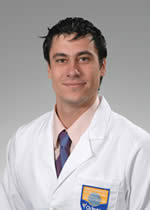
Chinese geranium, apparently a natural meth factory, making that bee a suspect
by Igor I. Bussel & Drey A. Pavlov
Jann Bellamy has recently authored an excellent piece on the limitations of the FDA and how the DSHEA actually protects the profits of supplement manufacturers rather than the health and well-being of consumers. Bellamy used the very poignant and currently “controversial” example of DMAA (methylhexanamine or 1,3-dimethylamylamine) to illustrate her point regarding the loopholes and lack of enforcement power of the FDA. The authors of this piece had been considering writing about DMAA and felt this would be an excellent time to further expound on Bellamy’s work. The goal of this article will be twofold: 1) to discuss the known history and pharmacology of DMAA, especially in regards to the basic methodology for evaluating novel substances or novel uses of substances in the context of lacking randomized, controlled trial-level evidence (i.e. the concept of science vs. evidence based medicine) and 2) how the DMAA story clearly and unequivocally demonstrates how the DSHEA allows for unscrupulous profiteers to game the system with little, if any, consequence and nothing but profit until the cost in lives forces the issue.
History
DMAA was originally developed by Eli-Lilly in 1948 and then later trademarked as Forthane to be used as a nasal decongestant (there are varying accounts but it seems that Eli Lilly patented the molecule in the early 1940s, trademarked and marketed it as Forthane in 1971 for allergic rhinitis, and then voluntarily withdrew it in 1983). The mechanism of action was vasoconstriction – the blood vessels in the nose would constrict so that less blood flow would lead to less nasal discharge. This is a mechanism used by common OTC nasal sprays like oxymetazoline (Afrin) and is indeed quite effective. However, Forthane was later withdrawn from the market because of significant side effects including headaches, tremors, and increased blood pressure. These effects likely occur because DMAA is structurally similar to amphetamine and as a result, the compound is not only a vasoconstricting agent but is also a central nervous system (CNS) stimulant.
Pharmacology
A 2011 study looked at the physiological effects of DMAA and claimed that “[t]o our knowledge, no data are available concerning the effects of oral geranamine intake on heart rate (HR) and blood pressure in individuals.” Literature searches for any of a number of variations of DMAA including various equivalent chemical names, trade names, and geranium derivatives also revealed no studies on the physiological effects of DMAA (except for one article in JAMA from 1950 which has no text available entitled “NEW and nonofficial remedies: methylhexamine; forthane.”) prior to the 2011 study. Since then, there have only been a few studies, many of them done this year. The only data available on the compound is from chemical safety manuals like the Merck Index, and an Encyclopedia of Chemicals, Drugs, and Biologicals from 1989 listing toxicological data of the compound in animals. The toxicology report is rather telling:
- TYPE OF TEST: LDLo — Lowest published lethal dose
- ROUTE OF EXPOSURE: Unreported
- SPECIES OBSERVED: Rodent — mouse
- DOSE/DURATION: 20 mg/kg
- TOXIC EFFECTS:
- Behavioral — convulsions or effect on seizure threshold
- Behavioral — ataxia
- Lungs, Thorax, or Respiration — other changes
Based on this limited report, it is difficult to determine clinical safety and efficacy effects of the compound. As with all vague things in the biomedical world, unsubstantiated declarations can be fabricated as long as they don’t make specific disease claims.
But do we really have no idea what this compound could or would do? Is there truly an absence of evidence? From the strictest interpretation of the hierarchy of evidence in EBM there is so little evidence as to be akin to no evidence. This is where science-based medicine steps in. Here at SBM we often talk about prior probability in the context of most CAM modalities having none, thus a p-value can indeed be spurious and safely disregarded in the proper context, regardless of “how significant” it is. But prior probability also works the other way and is indeed the basis physicians use for off-label prescription of medications, amongst other things. So in the case of DMAA we can look at the chemical structure, the side effects that led to the withdrawal of Forthane decades ago, the known vasoconstrictive effects that Eli Lilly exploited as the mechanism for their drug, the Merck toxicology data, and especially the fact that DMAA interferes with immunoassays for amphetamines, to draw a conclusion that in the absence of better evidence it is quite reasonable to conclude that the primary and side effects, as well as dangers of DMAA, would be very close to those of amphetamine – a compound we have studied extensively. A little bit of intellectual honesty would then lead someone to realize quite rapidly that unless we felt comfortable putting amphetamines out on the open market for anyone of any age to buy and consume, we shouldn’t do the same for DMAA. This is regardless of the source since coming from a plant won’t magically make the compound any safer or have different effects. Unless of course you believe in magic.
In a recent Google search, many websites devoted to bodybuilding and health supplementation have made the claim that DMAA is safe or at least is safe in “appropriate” doses while recognizing that taking too much can have adverse effects. Yet what can this possibly be based on? We have no idea what the elimination route actually is, what the half life is, if it builds up in tissues over time, if it causes damage to particular organs (like the liver or kidneys), or what the long term effects would be at any dosage. Many of these sites use anecdotal data – individuals using it didn’t die or have horrible effects and felt great whilst taking it. Yet this cannot possibly take into account the previously-mentioned considerations. Some sites even list recommended dosages and frequencies of administration. Once again, based on what? Nobody has any idea if the compound accumulates in the body or what the half-life is to make such a claim. But, such claims are perfectly legal and reasonable in the world of the DSHEA.
How to game the system using the DSHEA
So now that we have established that DMAA is a synthetically derived amphetamine-like molecule, how did we go from a drug that was discarded from medical use decades ago to a “natural” and “safe” dietary “supplement?”
It seems to have started in 1996 with an article out of China called “A study on the chemical constituents of geranium oil” (Ping et al. Journal of Guizhou Institute of Technology). Despite our best search efforts, we could not find that actual article, merely hundreds of references to it. We attempted to go directly to the journal website, but none exists. Despite this, it is the most commonly cited reference for the “natural” origins of DMAA as it claimed that this study found evidence of DMAA in geranium extracts.
That’s it. Really. That is all that was needed, despite all of the long synthetic history of the compound, to make it legal to market under the DSHEA. The Human Performance Resource Center has a pretty comprehensive list of all the companies and products that sell DMAA-containing compounds (PDF) under the protection of the DSHEA. There are 79 different products with almost as many companies. And that is just the list of products still currently marketed. There is a much longer list of products that are no more or no longer use DMAA. Sure makes that FDA warning to 10 companies seem even more pitiful, doesn’t it?
Since the unfindable Ping et al. study there have been a few more that have used extremely sensitive techniques and not been able to find any DMAA in geranium extracts. USPLabs rebuts by claiming that these studies didn’t look at the correct (and incredibly specific) geranium plant and states that “critics are uninformed”. Interestingly enough, in that same article “[a USPLabs spokesperson] did not clarify whether the DMAA contained in Jack3d and OxyElite Pro was actually sourced from geranium…” Thankfully, we have science to help us answer that question.
A recent study did actually find some DMAA in geranium extracts. However this was in the 0.6 to 1.4 ng/g range. That’s nanograms – as in one billionth of a gram, or 1/10^-9 grams of active substance per gram of geranium. The amount of DMAA in Jack3d by USPLabs appears to be a secret. Reading that thread from the USPLabs official blog is quite telling in and of itself, with comments from USPLabs claiming it has been studied and determined safe, citing their own in-house studies and press releases as evidence of this (as well as one actual peer reviewed study). However, in perusing the various sources and recommendations on the web anything ranging from 20 mg-75 mg is the recommended dosage with 50 mg being most commonly mentioned. That means USPLabs would have to be processing 50,000 kg of geranium to produce one dose of their product. What was that about prior plausibility again? If that weren’t enough, yet another study demonstrated that:
the enantiomeric and diastereomeric ratios of two different known synthetic DMAA compounds, as well as the total concentrations of DMAA and its stereoisomeric ratios in 13 different supplements, were determined by gas chromatography. The stereoisomeric ratios of DMAA in the synthetic standards and in all the commercial supplements were indistinguishable.
In organic chemistry, molecules that have the exact same number and type of atoms can have different configurations in three dimensions. Even if they have the same exact number and type of bonds this can occur. This is biologically very important since most of our enzymes have evolved to process one particular configuration of compounds that have multiple configurations. In synthetic chemistry, making a compound that has exactly the three dimensional shape that you want is often rather tricky and is called “controlling” the stereogenic or chiral centers. So when you do a synthetic reaction, you often get a mixture of these various configurations and the ratios are determined by the initial conditions and the reaction conditions. What this paper is telling us is that an actual sample of products that contain DMAA has ratios that are identical to what you would get from the standard laboratory synthesis of the compound. Of course, it is possible that this could be entirely coincidental and the geranium plant just happens to have the exact same ratios as well. However, for reasons that would go well beyond the scope of this article, that is almost as likely as homeopathy working. For a more in-depth discussion of how incredibly implausible the claims are, there is an excellent article dissecting every claim and every molecule as well.
Since there is a potential profit, USPLabs has created an entire website devoted to trying to prove many of these studies to be false accusations. They only address a handful of the criticisms above and none of them actually demonstrate the safety of DMAA. So why even bother? Because if DMAA is not a “natural” compound used for “hundreds” of years and generally recognized as safe (GRAS) then DMAA would be considered a novel drug and USPLabs would actually have to demonstrate safety and efficacy data in order to stay on the market. By asserting it is a “natural geranium extract” it can be shielded by the DSHEA and make all the burden of proof lay with the FDA while selling their product. Some consumers clearly know it is an amphetamine and use it as such for performance enhancement. At least they are (marginally) informed consumers. But many do not realize this and believe the marketing hype that this is a safe and an all-natural product, and have paid with their health and their lives.
Conclusion
Despite USPLabs protestations, there is no reasonable way that DMAA can be considered a natural or safe product for sale as a supplement under the DSHEA. And even if it did meet DSHEA requirements, this is an excellent example of the dangers of the law in the first place that allows so-called natural compounds to be marketed without prior safety and efficacy testing. The authors recognize that in the vast majority of cases such compounds have no effect at all, whether positive or negative, and the primary harm is in wasting people’s money with claims that are tantamount to fraud. However, there are clearly cases where that is not the case and harm is established about as clearly as one could expect without people dropping like flies. And that doesn’t take into account the less severe or acute harms experienced by vast numbers of people taking untested supplements.
But even more alarming to us is the fact that this DMAA saga exposes quite clearly how unscrupulous companies driven by nothing more than profit can game the system using the DSHEA as a shield, with such incredibly paltry evidence as a single article that can’t even be found as anything but a reference to support their claim for exemption under the DSHEA. While it is not established to any legal certainty, it seems quite clear to these authors that there is a preponderance of evidence demonstrating USPLabs and potentially other DMAA product manufacturers are knowingly selling a synthetically-derived drug and using the popular notion of the fallacy of the appeal to nature to market it for significant profits.
Authors
 Igor I. Bussel graduated from the University of California, Irvine in 2006 with a BS in Biological Sciences and distinction for excellence in research, and matriculated at the Chicago Medical School at RFUMS as a dual-degree student and has earned an MS in Healthcare Administration and Management. Igor recently completed the Doris Duke Clinical Research Fellowship at the University of Pittsburgh ophthalmic imaging research laboratory and will be pursuing residency training in ophthalmology and aspires to become a clinician-scientist.
Igor I. Bussel graduated from the University of California, Irvine in 2006 with a BS in Biological Sciences and distinction for excellence in research, and matriculated at the Chicago Medical School at RFUMS as a dual-degree student and has earned an MS in Healthcare Administration and Management. Igor recently completed the Doris Duke Clinical Research Fellowship at the University of Pittsburgh ophthalmic imaging research laboratory and will be pursuing residency training in ophthalmology and aspires to become a clinician-scientist.
 Drey Pavlov graduated from the University of California, Irvine in 2005 with BS in Biological Sciences and a BA in Anthropology. After graduation he worked in the ER at a Level 1 Trauma facility for 3 years and then entered the University of Queensland-Ochsner medical program. During that time he lead development of the US Medical Licensing Examination adjunct curriculum for the School of Medicine and was an executive founding member of the Ochsner Medical Student Association of which he was formerly President. Drey is currently in his second year of internal medicine residency training and still plans to pursue a Critical Care and Pulmonology fellowship, with specific interest in sepsis, space medicine, and comparative effectiveness research.
Drey Pavlov graduated from the University of California, Irvine in 2005 with BS in Biological Sciences and a BA in Anthropology. After graduation he worked in the ER at a Level 1 Trauma facility for 3 years and then entered the University of Queensland-Ochsner medical program. During that time he lead development of the US Medical Licensing Examination adjunct curriculum for the School of Medicine and was an executive founding member of the Ochsner Medical Student Association of which he was formerly President. Drey is currently in his second year of internal medicine residency training and still plans to pursue a Critical Care and Pulmonology fellowship, with specific interest in sepsis, space medicine, and comparative effectiveness research.
